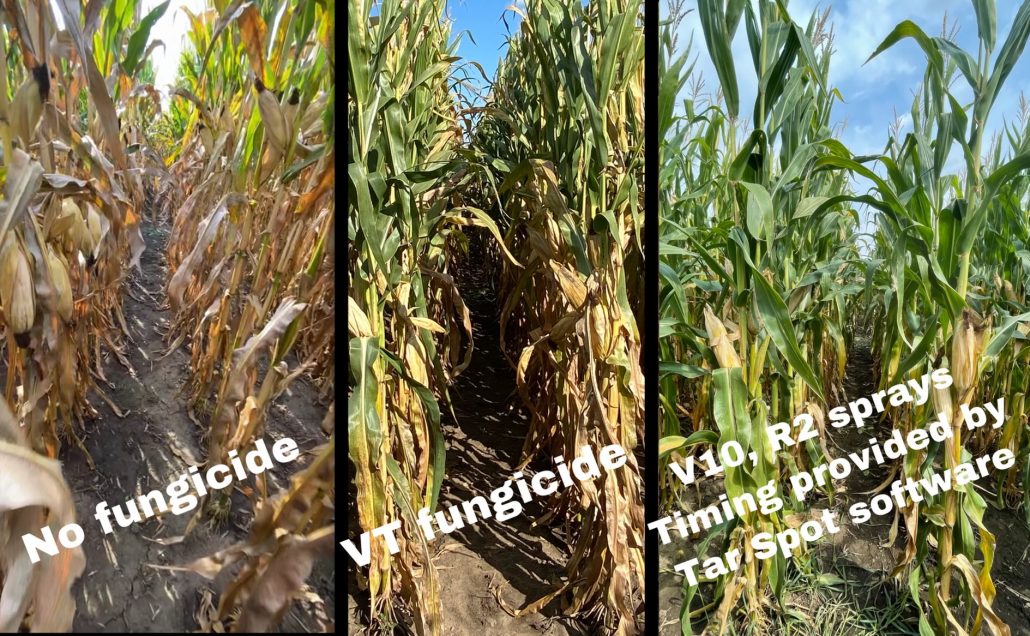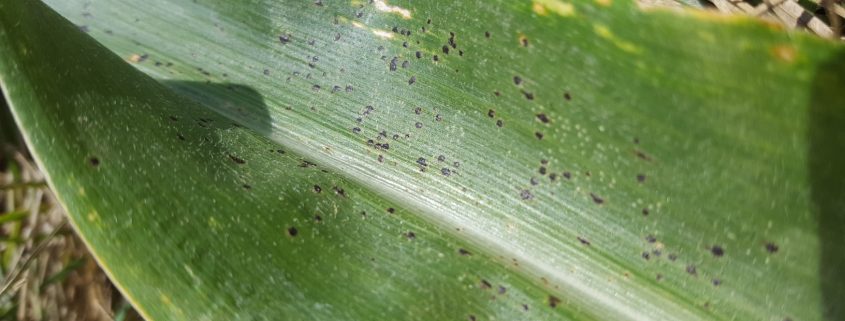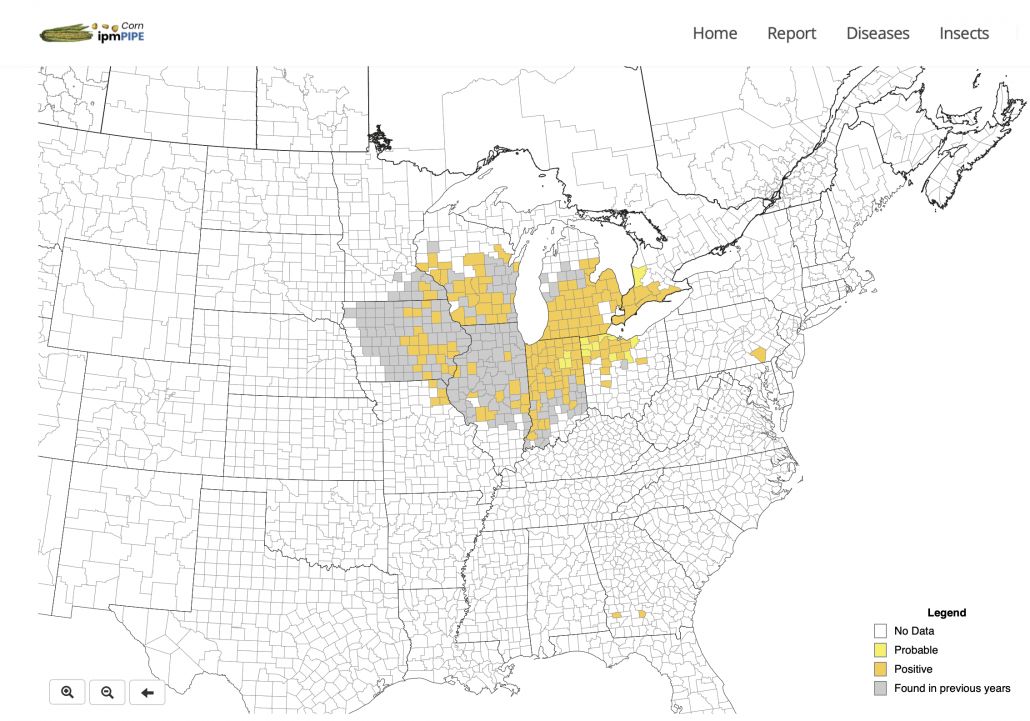Tar Spot Is Here To Stay…
Damon Smith, Extension Field Crops Pathologist, Department of Plant Pathology, University of Wisconsin-Madison
Roger Schmidt, Nutrient and Pest Management Program, University of Wisconsin-Madison
…let’s start working on how to manage it in Wisconsin (Some thoughts on how to do this in the “Other Resources” below). While we haven’t had major epidemics every year since 2016, tar spot has been found each year and caused problems in some corn fields since its discovery. Figure 1 show counties in the U.S. that tar spot has been found, to date. I’m sure there are others in Wisconsin, feel free to send me pictures or samples for confirmation.
Yes, 2018, and now 2021, have clearly seen significant tar spot epidemics that affect yield. What challenges will we be dealing with as we move into harvest in 2021? Here are my thoughts.
Silage Corn Harvest
I took a crack at this one in the video below.
Many are already chopping or have finished at this point. However, it is important to realize that tar spot can dry corn plants abnormally fast. Thus, packing the bunker and initiating fermentation can be a challenge. This can lead to secondary issues such as fungal growth in the bunker and/or increases in mycotoxins. Monitor things carefully and do the best job you can this year putting the crop in the bunker. This year isn’t the year to cut corners!
Grain Corn Harvest
Now is the time to get out there and see how much tar spot is in your grain corn crop and start making plans for order of harvest. If the crop is shutting down abnormally fast, then stalk integrity is going to start to become an issue. Prioritizing fields with high tar spot pressure for harvest first, will help to limit lodging issues and ease harvest headaches. Also, be sure to check for other issues as you scout, like ear rots, that can lead to mycotoxin issues. Get mycotoxin tests if you think you might have problems, before you put it in the bin. You don’t want to mix grain that is low in mycotoxins with grain that has high levels of mycotoxins. Incidentally, no mycotoxins have been implicated directly with tar spot.
More on the grain harvest situation can viewed in the video below.
Tar Spot Management Nuggets as Harvest Begins
The two big questions I have been getting lately about tar spot management are: 1) How is tar spot hybrid resistance looking? 2) How does fungicide work on tar spot?
First, hybrids…There aren’t any hybrids that we know of that are completely resistant. Yes, some are more partially resistant that others. Now is also a good time to look at hybrids. Those that show less disease and are still green are going to be better candidates to grow next year versus those that are showing lots of tar spot and have already dried down. Look at local hybrid trials, especially. Write down the numbers of hybrids that look good. Leave the others that look bad.
Now the fungicide question. Yes, there are some fungicides that work. Yes, even on susceptible hybrids they can help. However, like white mold in soybeans, fungicide efficacy is largely dependent on fungicide application timing. Miss the onset of the epidemics, or periods where the epidemic is rapidly increasing, and even a great fungicide will look terrible.
To help with the timing decision we have developed the Tarspotter smartphone app. We have been testing this app over the last couple of seasons. It is useful in that it can help you anticipate epidemics of tar spot to get fungicide applications on preventatively, when they will work the best. Figure 2 below shows the performance of a fungicide application applied using Tarspotter versus a single application at the VT growth stage versus the non-treated check. While the standard VT application did well, two-applications (one at the start of the epidemic at V10 and another at R2) were needed to hold tar spot off in 2021. As you can clearly see, Tarspotter can be used to make these complicated spray decisions and optimize fungicide performance.

Figure 2. Non-treated check on the left, fungicide applied at VT only in the center, and fungicide applied at V10 and R2 according to Tarspotter on the right.
As for fungicide products, we continue to see mixed-mode-of-action products work more consistently that single-mode-of-action products. This fall we should have some updated fungicide performance information that might shed more light on this subject. Stay tuned!
Other Resources
Will a Second Fungicide Be Worth the Cost for Tat Spot Management?
How Tar Spot of Corn Impacted Hybrid Yields During the 2018 Midwest Epidemic






